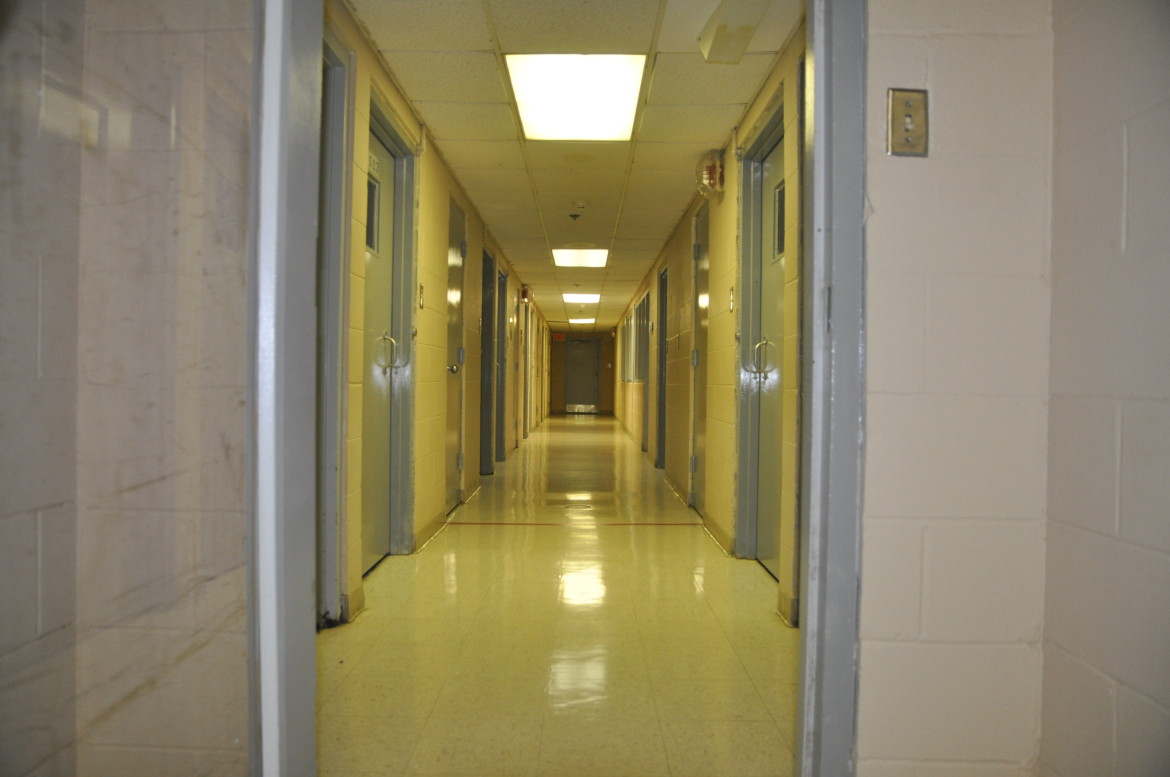 Dr. Bruce Perry is a child psychiatrist and senior fellow at the ChildTrauma Academy in Houston and adjunct professor of psychiatry at Northwestern University’s Feinberg School of Medicine. His neuroscientific research has focused largely on the effects of trauma on brain development. He has consulted on high-profile cases involving children in crisis, including the Columbine High School massacre, the Oklahoma City bombing, the Waco, Texas, siege, the 9/11 terrorist attacks, the 2010 earthquake in Haiti and the aftermath of Hurricane Katrina. Here, Perry explains to The Center for Investigative Reporting how it feels to be a teenager locked in solitary confinement, and the effects of isolation on the developing brain. Answers have been edited for length and clarity.
Dr. Bruce Perry is a child psychiatrist and senior fellow at the ChildTrauma Academy in Houston and adjunct professor of psychiatry at Northwestern University’s Feinberg School of Medicine. His neuroscientific research has focused largely on the effects of trauma on brain development. He has consulted on high-profile cases involving children in crisis, including the Columbine High School massacre, the Oklahoma City bombing, the Waco, Texas, siege, the 9/11 terrorist attacks, the 2010 earthquake in Haiti and the aftermath of Hurricane Katrina. Here, Perry explains to The Center for Investigative Reporting how it feels to be a teenager locked in solitary confinement, and the effects of isolation on the developing brain. Answers have been edited for length and clarity.
The Center for Investigative Reporting: How do kids experience isolation?
Dr. Bruce Perry: Almost all of them start to retreat into their inner world because there’s nowhere else to get stimulation. Some of these kids, without any external relational anchors, start to go crazy. They’ll have ruminations about what they’re going to do to that person who got them in trouble, and that can morph into murderous fantasies. The brain is so used to a variety of sensory input that in the absence of that, over time, they start to hallucinate and get paranoid. You can literally make people crazy by keeping them in solitary.
CIR: We hear a lot of stories about prolonged isolation, but what are the effects of just a few days of solitary confinement on kids?
Dr. Perry: They end up getting these very intense doses of dissociative experience, and they get it in an unpredictable way. They’ll get three days in isolation. Then they’ll come back on the unit and get two days in isolation. They’ll come back out and then get one day. They end up with a pattern of activating this dissociative coping mechanism. The result is that when they’re confronted with a stressor later on, they will have this extreme disengagement where they’ll be kind of robotic, overly compliant, but they’re not really present. I’ve seen that a lot with these kids. They’ll come out, and they’re little zombies. The interpretation by the staff is that they’ve been pacified. “We’ve broken him.” But basically what you’ve done is you’ve traumatized this person in a way that if this kid was in somebody’s home, you would charge that person with child abuse.
CIR: You’ve worked with young people inside solitary confinement units. What are those places like?
Dr. Perry: They tend to be stereotypical institutional settings with cinderblock walls and tile floors and colors that are just drab, almost depressing in their nature. A lot of echoing sounds and reverberation. These are sensory experiences that are atypical. The natural world has a certain ebb and flow, it has a rhythm to it, a smoothness to the sounds that we hear. You go into institutional settings and the architecture creates a sensory environment that is unfamiliar and unsettling. Some places don’t have natural light. Some keep the lights on all the time, so your biorhythms get all messed up. Some places will be eerily silent, particularly if you’re in isolation, and some places will be persistently noisy, so any effort to sleep or regulate yourself is interfered with. The environment is physiologically disrespectful.
CIR: Kids in isolation must lose all sense of control. What’s the impact of that?
Dr. Perry: One of things that helps us regulate our stress response is a sense of control. With solitary, when you start to take away any option, any choice, you’re literally taking somebody with a dysregulated stress response system, like most of these individuals in jail, and you’re making it worse. The more you try to take control, the more you are inhibiting the ability of these individuals to develop self-control, which is what we want them to do.
CIR: How does it affect a kid’s sense of self-worth to be locked away from everyone else?
Dr. Perry: Most of these kids feel marginalized to start with. They feel like they’re bad, they did something wrong, they don’t fit in. And isolation is essentially the ultimate marginalization. You’re so marginalized you don’t even fit in with the misfits, and we are going to exclude you from the group in an extreme way. In some ways it’s the ultimate message that we don’t care for you. We are neurobiologically interdependent creatures. All of our sensory apparatus is bias toward forming and maintaining relationships with human beings. When you are not part of the group, it’s a fundamental biological rejection.
CIR: We interviewed several teenagers about their experience in solitary confinement and asked them what they think about while they’re in there. Almost without exception, they went straight to grief and loss, loved ones who had died, often prematurely and in horrible ways. Why do you think that is?
Dr. Perry: Isolation, the experience of being separated from human beings, for them, is reminiscent of the separation that happened earlier from people who were meaningful to them. The feeling is evocative of the last time they felt so disconnected or felt the loss of human interactions. The amount of loss and exposure to violence and trauma that most of these kids have is pretty astounding. So it triggers relational-based memories, and right at the top of those would be memories around loss and grief.
CIR: A common argument from corrections professionals is that they have no choice but to isolate kids who are unruly or violent. How should we be designing our juvenile justice facilities so that they not only promote healthy development, but also provide safety without using solitary?
Dr. Perry: There’s an approach called collaborative problem-solving, which has shown tremendous effectiveness with dysregulated, explosive individuals. It’s not like we’re going to ignore the issue, but we’re going to acknowledge it and talk about a solution that we come up with together. And when you do that, it literally defuses things in a very powerful way. It’s ironic that in many of these models of intervention — mental health, education, juvenile justice — rather than taking advantage of the major biological unit of leverage we have for healthy development, which is the relationship, we actually make it more relationally impoverished.
This Q&A was produced by The Center for Investigative Reporting, an award-winning, nonprofit newsroom based in the San Francisco Bay Area. Learn more at cironline.org.

Pingback: Entrevista: Solitary Confinement and Teens Shouldn’t Mix | Juvenile Justice Information Exchange | NotiProyecto B
Pingback: Q&A: Solitary Confinement and Teens Shouldn’t Mix – Juvenile Justice Information Exchange | Best Copytraders